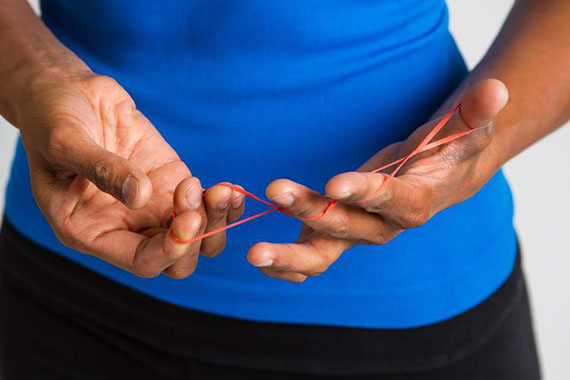You feel a sharp pain across your finger after a long day of hanging on crimpers. Your finger is swollen and difficult to bend. You may have heard a snap or pop while pulling hard on a particular hold. It is likely that you strained or tore a pulley ligament in your finger.
The muscles in our forearms extend into long narrow tendons as they reach into the fingers. These tendons run through sheaths and are anchored down by pulleys that keep the tendons gliding flush to the bones. When excessive strain is placed on the finger tendons, the pressure exerts an outward force on the pulley, which may cause it to tear. This is one of the most common climbing injuries, but lucky for you, it can be prevented with a rubber band and some targeted physical therapy exercises.
Finger expansions to prevent pulley strain
Duration
Perform 3 sets of 10 repetitions
This exercise strengthens the muscles in the hand and fingers that can help oppose pressure on the finger pulleys.
Set-up
Putting on the rubber band:
- Start with a rubber band around your thumb.
- Rotate one half turn clockwise and loop it over your index finger.
- Rotate one half turn counter-clockwise and loop it over your middle finger. Repeat this pattern until all fingers are connected.
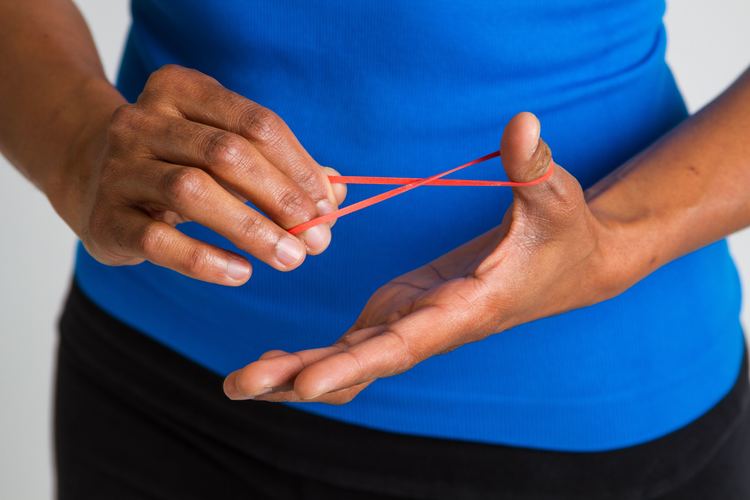 |
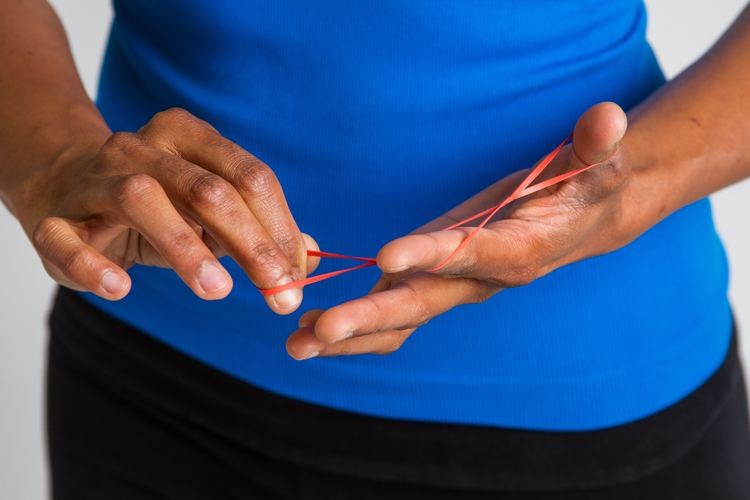 |
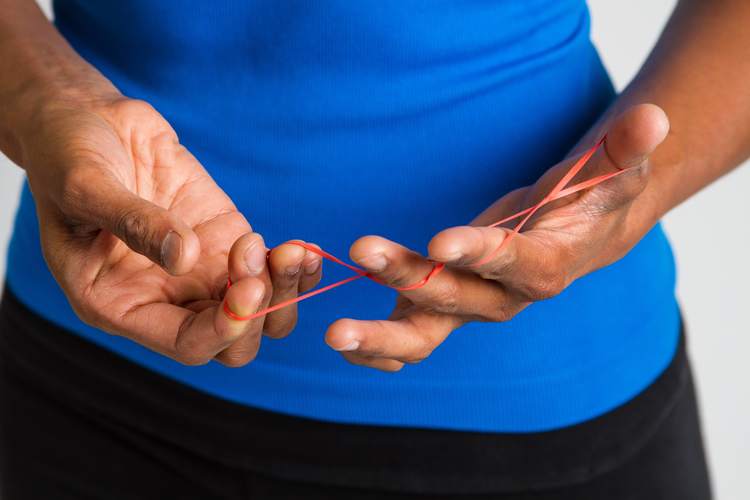 |
How to do finger expansions
- Begin with your fingers flexed forward.
- Fully spread your fingers outwards against the resistance.
- This can also be performed with specialty equipment such as the TheraBand Hand Xtrainer
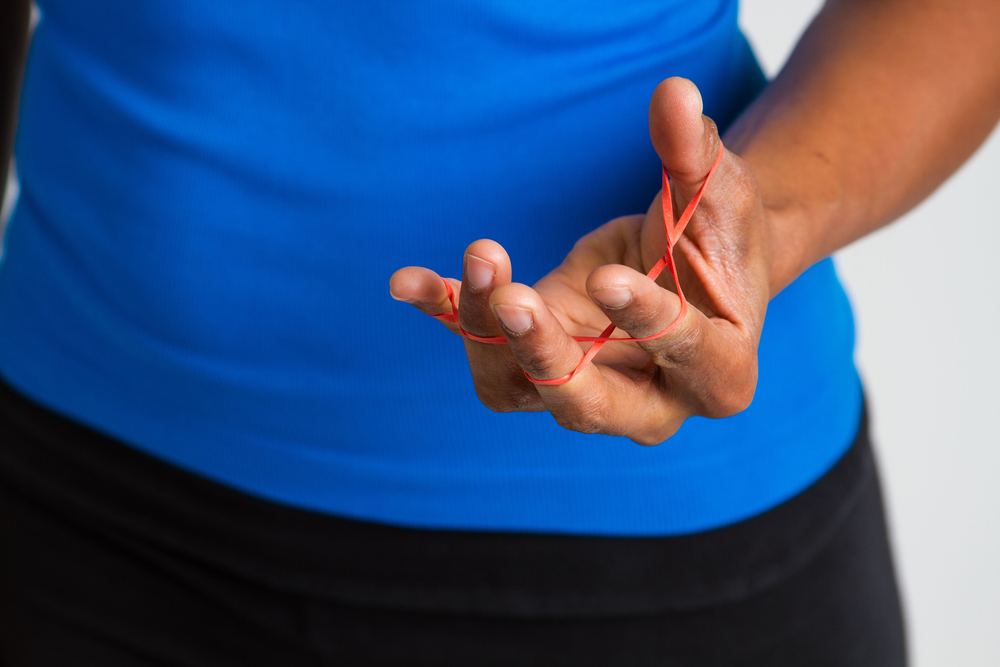 |
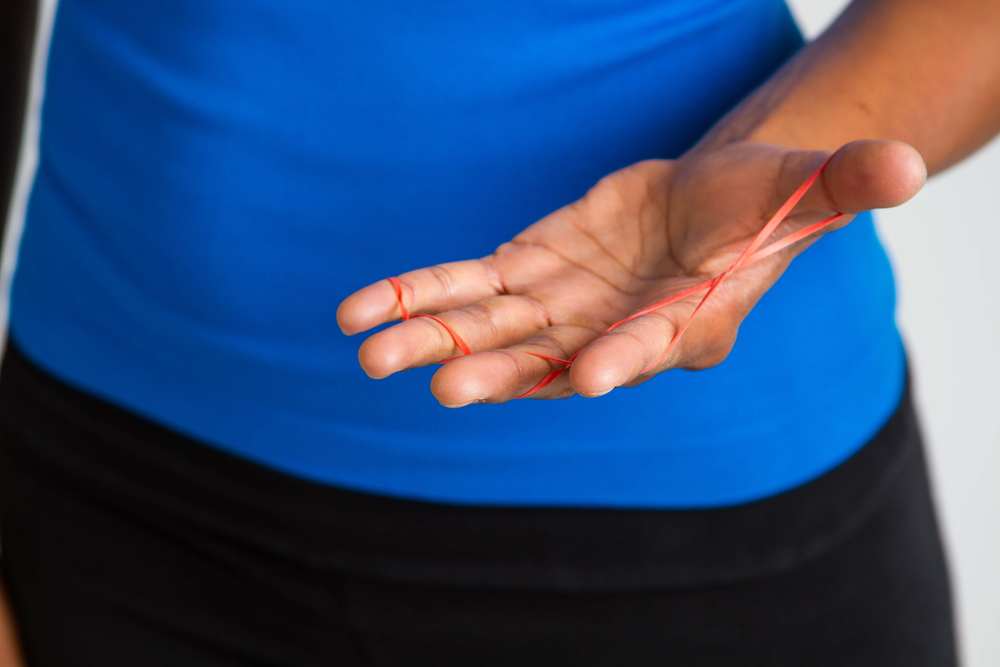 |
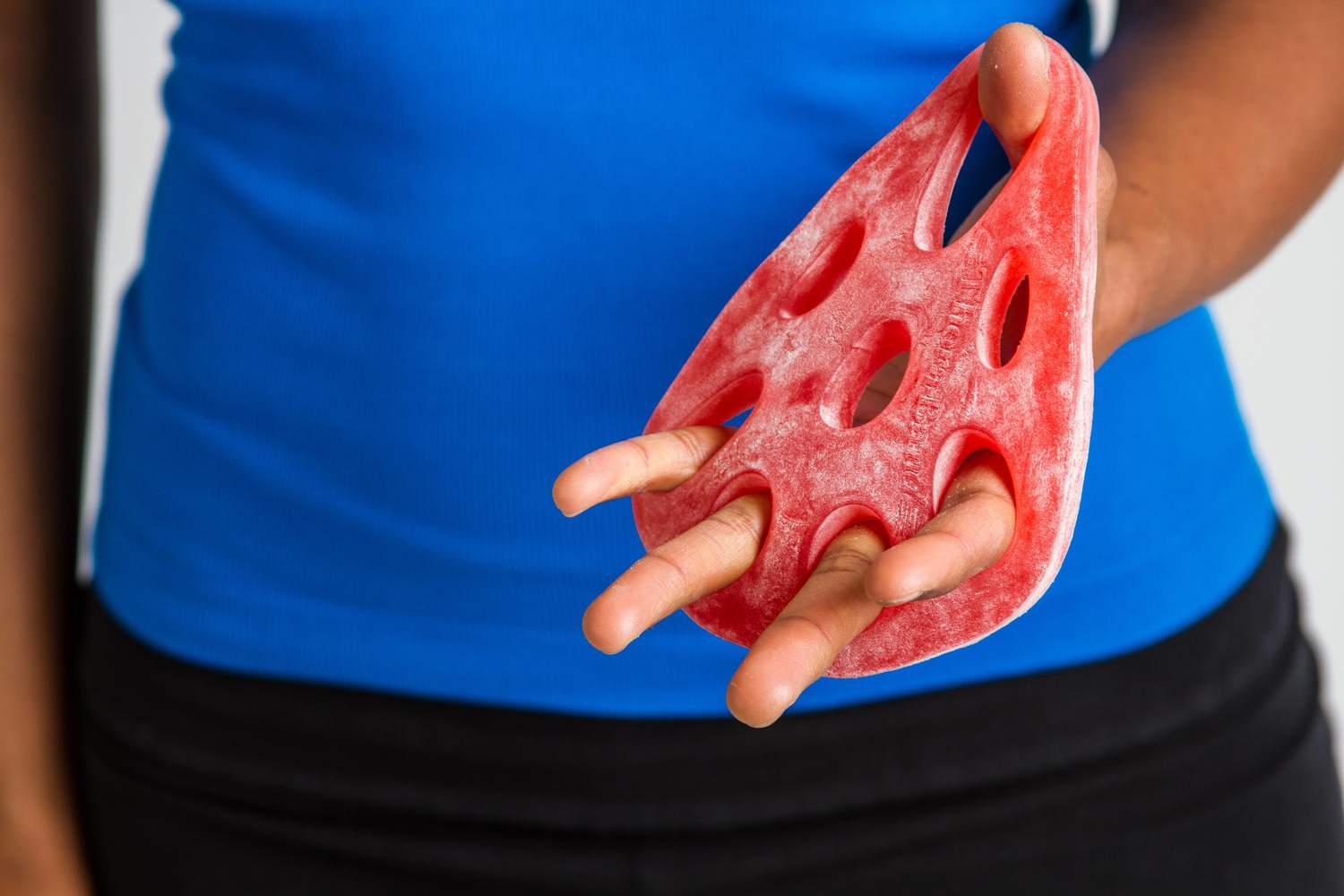
Tip: mirror a climbing stance
Perform the finger expansion exercise in a partial squat with both hands over your head. Integrating the finger expansions into this stance is more effective because it closely simulates the body position while climbing.
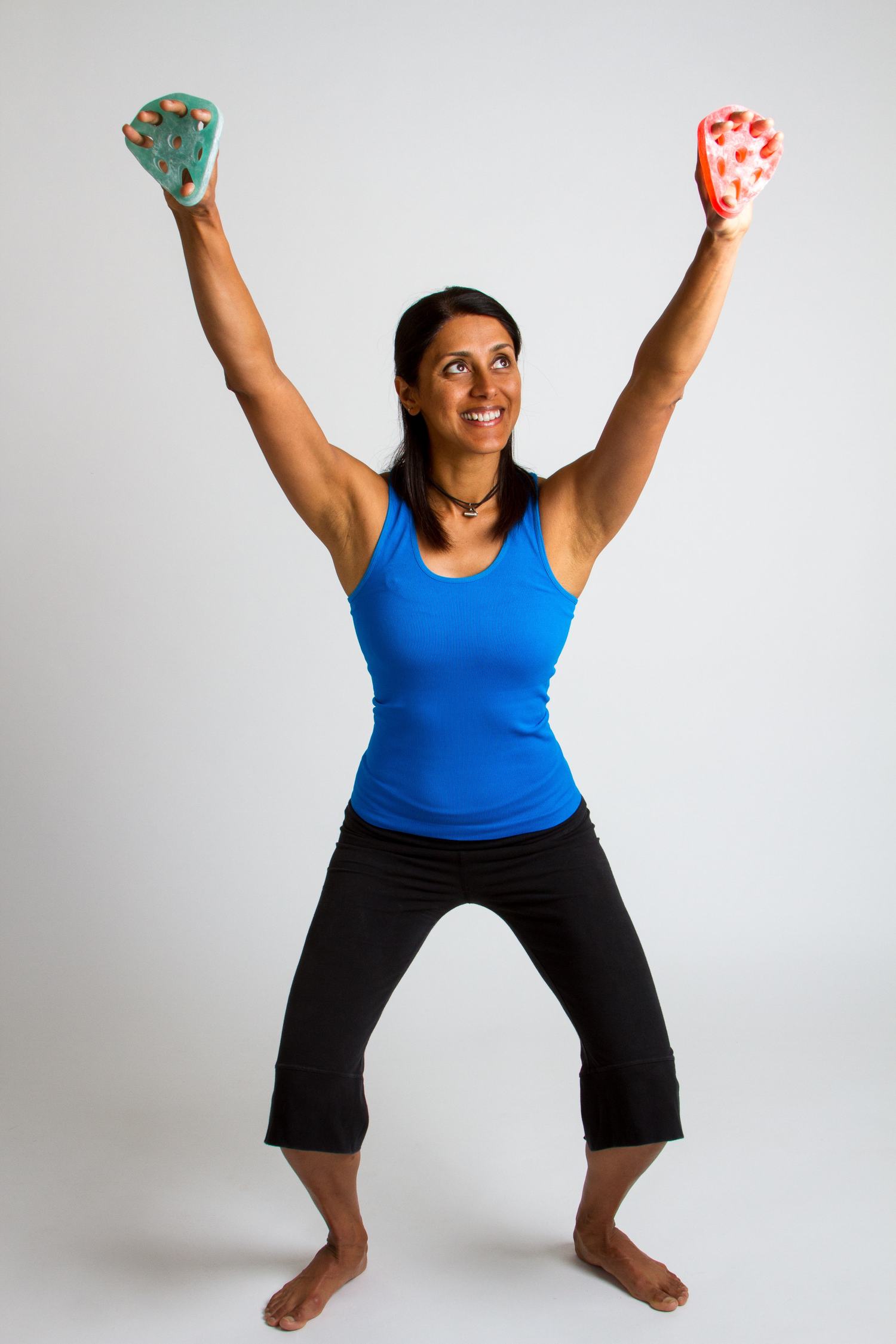
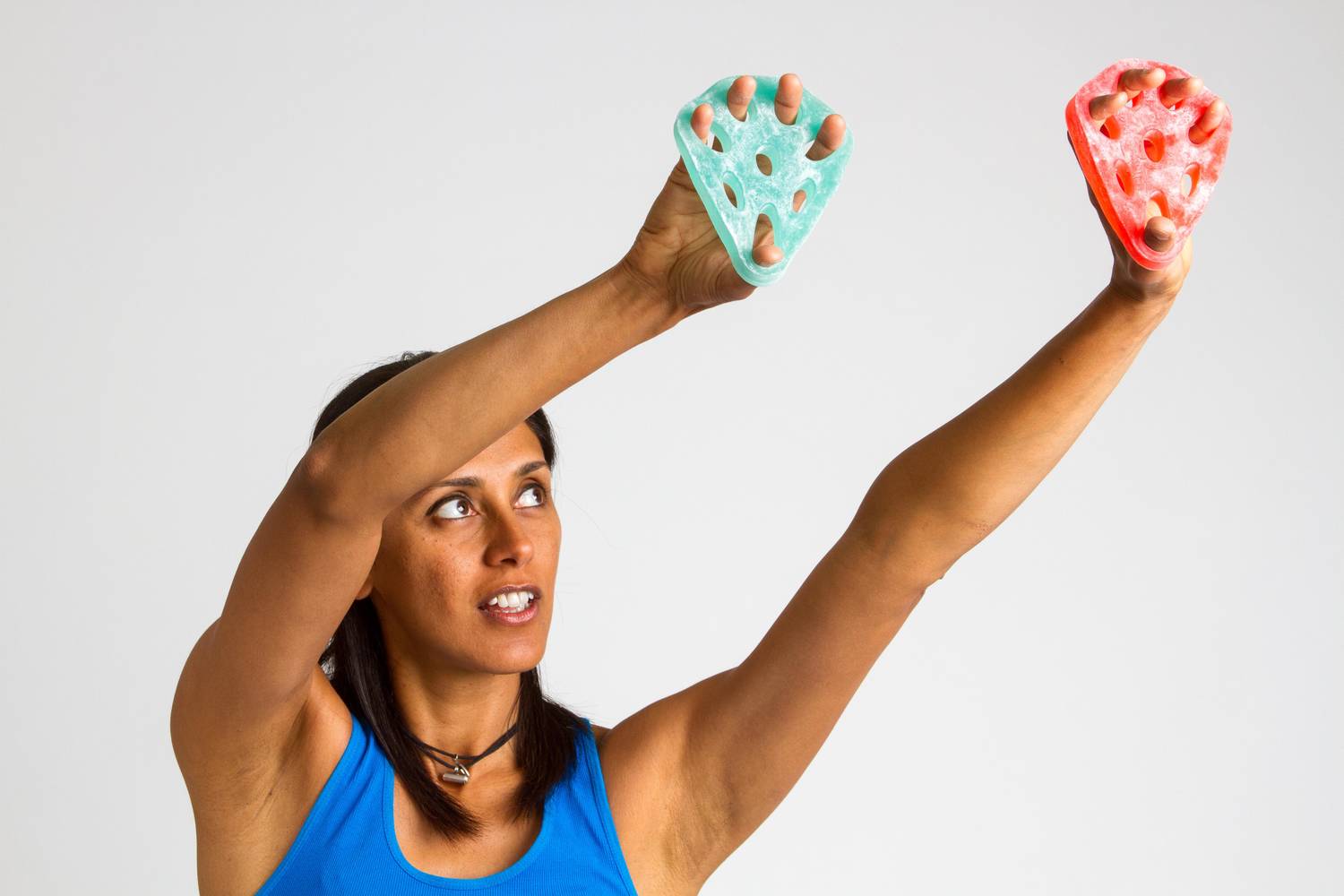
For more strategies on how to prevent pulley injuries, view the full article in DPM’s issue 29 on page 46.
Silfverskiold KL, May EJ. Flexor tendon repair in zone 2 with a new suture technique and an early mobilization program combining passive and active motion. J Hand Surg 1994;19A:53–60.
Groth GN. Pyramid of progressive force exercises to the injured flexor tendon. J Hand Ther 2004;17(1): 31–42.
Cannon NM, Strickland JW. Therapy following flexor tendon surgery. Hand Clin 1985;1:147.Skirven TM. Rehabilitation after tendon injuries in the hand. Hand Surg 2002;7(1):47–59.
Wadsworth C, ed. Current Concepts of Orthopaedic Physical Therapy. La Crosse, Wis: Orthopaedic Section, APTA Inc; 2001:10.
Manske PR, Lesker PA. Nutrient pathways of flexor tendons in primates. J Hand Surg Am. 1982;7:436–444.
Aoki M, Kubota H, Pruitt DL, Manske PR. Biomechanical and histological characteristics of canine flexor repair using early postoperative mobilization. J Hand Surg Am. 1997;22:107–114.
Boyer MI, Goldfarb CA, Gelberman RH. Recent progress in flexor tendon healing. J Hand Ther. 2005;18:80–85.Horst, Eric. Training for climbing. Helena, Montana: FalconGuides; 1st edition, December 1, 2002.

